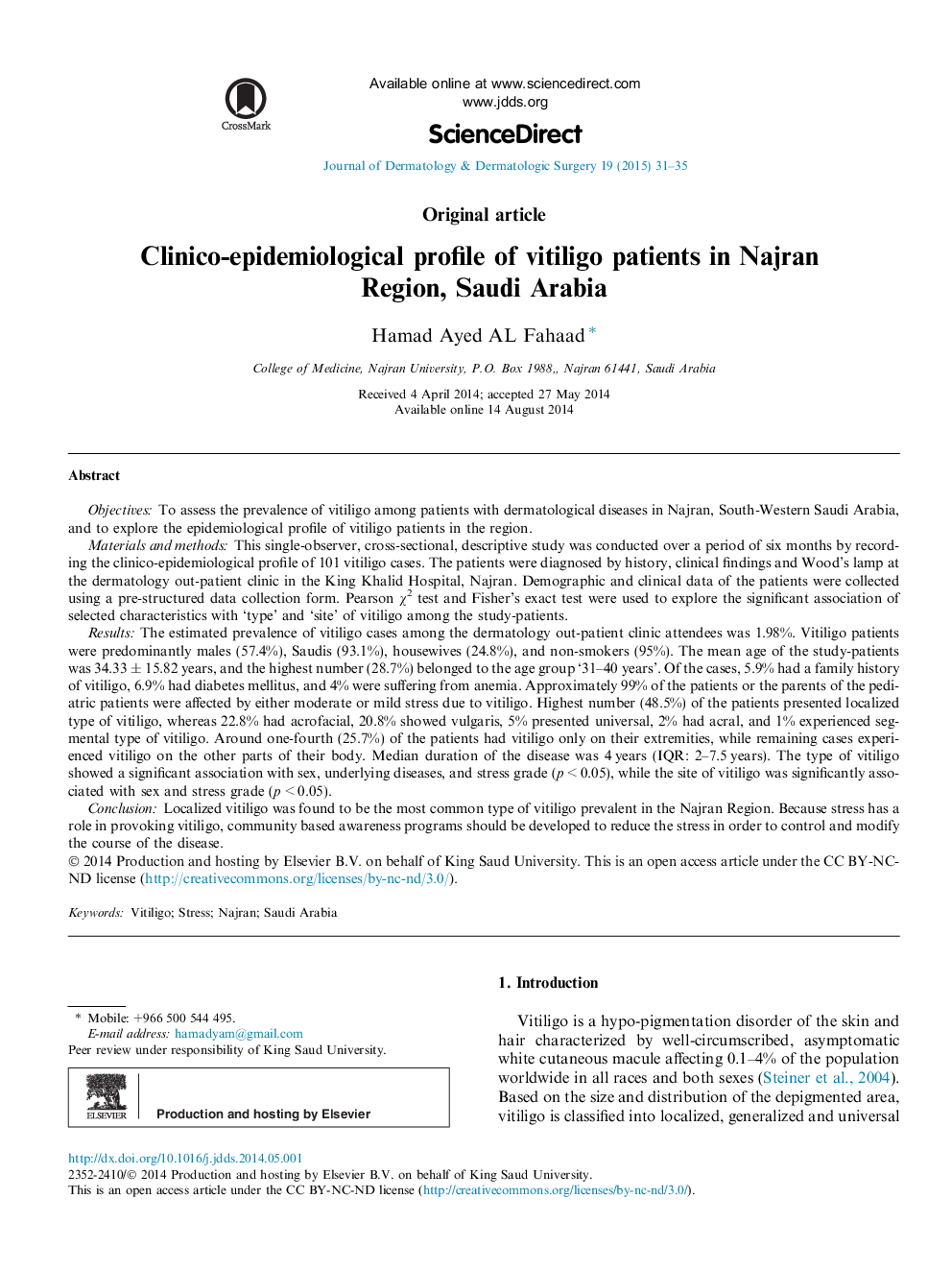| Article ID | Journal | Published Year | Pages | File Type |
|---|---|---|---|---|
| 3214718 | Journal of Dermatology & Dermatologic Surgery | 2015 | 5 Pages |
ObjectivesTo assess the prevalence of vitiligo among patients with dermatological diseases in Najran, South-Western Saudi Arabia, and to explore the epidemiological profile of vitiligo patients in the region.Materials and methodsThis single-observer, cross-sectional, descriptive study was conducted over a period of six months by recording the clinico-epidemiological profile of 101 vitiligo cases. The patients were diagnosed by history, clinical findings and Wood’s lamp at the dermatology out-patient clinic in the King Khalid Hospital, Najran. Demographic and clinical data of the patients were collected using a pre-structured data collection form. Pearson χ2 test and Fisher’s exact test were used to explore the significant association of selected characteristics with ‘type’ and ‘site’ of vitiligo among the study-patients.ResultsThe estimated prevalence of vitiligo cases among the dermatology out-patient clinic attendees was 1.98%. Vitiligo patients were predominantly males (57.4%), Saudis (93.1%), housewives (24.8%), and non-smokers (95%). The mean age of the study-patients was 34.33 ± 15.82 years, and the highest number (28.7%) belonged to the age group ‘31–40 years’. Of the cases, 5.9% had a family history of vitiligo, 6.9% had diabetes mellitus, and 4% were suffering from anemia. Approximately 99% of the patients or the parents of the pediatric patients were affected by either moderate or mild stress due to vitiligo. Highest number (48.5%) of the patients presented localized type of vitiligo, whereas 22.8% had acrofacial, 20.8% showed vulgaris, 5% presented universal, 2% had acral, and 1% experienced segmental type of vitiligo. Around one-fourth (25.7%) of the patients had vitiligo only on their extremities, while remaining cases experienced vitiligo on the other parts of their body. Median duration of the disease was 4 years (IQR: 2–7.5 years). The type of vitiligo showed a significant association with sex, underlying diseases, and stress grade (p < 0.05), while the site of vitiligo was significantly associated with sex and stress grade (p < 0.05).ConclusionLocalized vitiligo was found to be the most common type of vitiligo prevalent in the Najran Region. Because stress has a role in provoking vitiligo, community based awareness programs should be developed to reduce the stress in order to control and modify the course of the disease.
